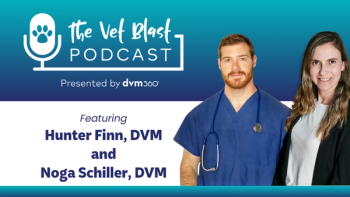
Angell veterinarian performs facial reconstruction surgery on a Boxer
A 5-year-old dog was given a new lease on life-more significantly, a new face.
BOSTON — A 5-year-old dog was given a new lease on life—more significantly, a new face. In fact, a veterinary surgeon successfully performed reconstructive surgery in the wake of a skunk attack that left the animal with a 4-inch by 5-inch infected bite wound on its face.
Homeward bound: The Boxer is expected to make a complete recovery.
"People relate to a dog's face more than any other anatomical area. Looking at the dog, there was a major cosmetic defect," explains Mike Pavletic, DVM, a veterinary surgeon at Angell Animal Medical Center in Boston, who performed the surgery on the Boxer in September.
For the procedure, Pavletic transplanted skin from the dog's neck region to his face to seal off the wound.
"Because there's not as much skin available in the head area as in the trunk area of the patient, you can often use skin nearby to close the wound," he explains. "In this case, we lost a large portion of the side of the face. (The defect was the size of an adult hand.) The question was, 'How do we close this?'"
Post-op perfect: This Boxer's facial defect-which began behind and above the left eye and extended down the side of the face-was successfully closed with skin from the dog's neck region.
The defect was behind and above the left eye, extending down the side of the face. One portion of the defect was reconstructed using skin from the neck area adjacent to the facial area. Pavletic and his team pivoted that skin or rotated it up to close part of the defect. He also used skin on the lower neck area and raised that to close roughly half of the wound.
When the dog went home, the whole wound area was closed, according to Pavletic, who noted that the dog did not appear to be in that much pain. The animal received pain medications. Sutures were left in for two weeks. Management was done on an outpatient basis.
The dog is expected to make a complete recovery, Pavletic adds.
"Nothing really shocks me anymore," Pavletic says. "In one case, a cat had the side of its face hanging on his neck. We were able to reconstruct his neck. The most challenging cases are animals that lose extensive amounts of skin secondary to burns or vehicular trauma."
Since 1980, Pavletic says he has observed a rise in the number of reconstructive surgeries. Based on his observations, most of the wounds in animals in need of reconstructive surgery were due to some form of trauma.
"Today, there is a greater proportion of animals where if you're taking a large tumor off or removing half the chest wall for a large tumor, reconstructive surgery is pivotal to getting the animal back to health and function. The trend is that there is a lot more reconstructive surgery and a lot of trauma," he says.
Significant advances in the realm of reconstructive surgery include different types of flaps involving skin or muscle, which can be used to cover various parts or anatomical regions. Pavletic says there is a new technique for closing wounds by skin stretching. A device can be placed on the outside of the skin, so within 48 to 72 hours, a number of large defects involving the neck or trunk area can be addressed.
"The main advances have been in various forms of flaps to close wounds from the mouth to head, neck, trunk and legs," he says.
Reconstructive surgery doesn't have to equal a huge expense on the part of the client, either. Pavletic says that most reconstructive surgeries actually cost less than the average surgery for an anterior cruciate ligament repair.
"There are no real implants. We're using the patient's own tissues and moving them to a different region where they'll do the most good," he says. "In the Boxer that was bitten, part of the cost incurred was that the dog presented with dead skin and had infection in that area. To help the dog, we had to surgically remove the dead skin and treat the wound topically and systemically to control infection. Once the wound is healthy and dead tissue is gone, and the body is forming a healthy wound bed, we close the wound. However, if an animal comes in with a serious condition, it can be costly."
In the case of cancer surgeries, expenses can escalate. For example, in tumor removal, according to Pavletic, you're shifting skin to close the defect and encapsulating tumor removal. Large wounds can require additional treatment before surgery can be done.
"With reconstructive surgery… we've learned by research and clinical trials how to close certain body defects by moving tissues around," he adds.
For veterinarians seeking more practical applications regarding reconstructive surgery, Pavletic refers to techniques discussed in his book, an atlas on how to manage and close wounds that notes which techniques are most useful.
Newsletter
From exam room tips to practice management insights, get trusted veterinary news delivered straight to your inbox—subscribe to dvm360.





